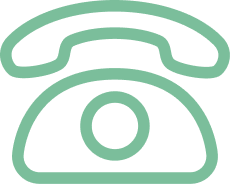Part II
- Pollinator plants includes trees, vegetables, herbs, and insects working together in nature to ensure the reproduction of many plant species. Pollinators are crucial for biodiversity and food production, and they help plants reproduce by transferring pollen from one flower to another. We also play a part in this process both positively or negatively. So, by knowing some basic anatomy and why each is an integral part of the whole.
- By definition: “… anything that helps move pollen from the male (stamen) part of the plant to the female (stigma) part of the plant on the same plant or another plant…”
Pollinator Insects:
These are the insects that move pollen between flowers, facilitating fertilization. Some of the most important pollinators include:
- Honeybees (Apis mellifera) – The most famous pollinators, they are vital for pollinating many crops like apples, almonds, and blueberries.
- Bumblebees (Bombus spp.) – These bees are excellent at pollinating flowers with deep tubes, like clover and tomatoes.
- Butterflies – They prefer bright, fragrant flowers and are vital for many wildflowers.
- Moths – Particularly night-blooming plants are pollinated by moths.
- Beetles – Often pollinate older, more primitive plants, such as magnolias and water lilies.
- Flies – Many species of flies are attracted to flowers that are smaller and have less pleasant odors, but they still help pollinate plants like parsley and dill.
Creating a habitat with both pollinator-friendly plants and a variety of insects can greatly improve pollination in your garden or environment.
Pollinators play a crucial role in helping plants reproduce by transferring pollen from one flower to another, facilitating fertilization. Here’s how pollinators typically spread pollen in plants:
1. Attraction to Flowers:
- Nectar and Pollen: Pollinators, like bees, butterflies, and hummingbirds, are attracted to flowers primarily for their nectar (a sugary liquid) and pollen (protein-rich powder). Flowers offer these as rewards to the pollinators.
- Visual and Scent Cues: Plants often have bright colors, patterns, and scents to attract pollinators. For example, bees are attracted to blue and yellow flowers, while hummingbirds are drawn to red, tubular flowers.
2. Foraging for Nectar and Pollen:
- Pollinators land on a flower to collect nectar with their long tongues or proboscis. While feeding, they often brush against the anthers (the pollen-producing part of the flower).
- Pollen sticks to the pollinator’s body—on their legs, thorax, or abdomen. This happens because the pollen grains are sticky or have barbed structures that adhere to the pollinator.
3. Transfer to Another Flower:
- After feeding, the pollinator moves on to another flower. During this process, pollen that has adhered to the pollinator’s body is transferred to the stigma, the receptive part of the next flower’s pistil (female reproductive part). This is the key step in pollination.
- This pollen transfer allows for cross-pollination (when pollen moves between different plants) or self-pollination (pollen moves within the same plant).
4. Fertilization:
- Once the pollen lands on the stigma, it travels down to the style and into the ovary, where fertilization occurs. The pollen grain contains sperm cells, and once it fuses with the egg cells inside the ovary, a seed is formed.
- This fertilized ovary will then develop into a fruit or seed, which contains the potential for a new plant.
5. Reward for Pollinators:
- As pollinators feed, they collect nectar and pollen, which provides them with energy and sustenance. Plants rely on pollinators’ need for these resources to ensure the pollen is spread effectively across their species.
Types of Pollination:
- Biotic Pollination: This is the pollination that occurs with the help of living creatures, such as humans, insects, birds, and bats. This is the most common and effective type of pollination in flowering plants.
- Abiotic Pollination: In some plants, pollination can happen through non-living agents, such as wind or water, but this is less targeted and less efficient than biotic pollination.
In short, pollinators like bees and butterflies spread pollen as they visit flowers to gather food. This helps plants reproduce, ensuring the continuation of plant species and the ecosystems that depend on them.
What are 3 of the most important pollinators on Earth?


Who Are the Pollinators?
- Solitary Bees. Honey bees (Apis spp.) …
- Bumble Bees. Bumble bees are important pollinators of wild flowering plants and agricultural crops. …
- Butterflies & Moths. Butterflies and moths—both members of the order Lepidoptera—are valuable pollinators, supporting the health of ecosystems and agriculture.
New England has many pollinator insects, including bees, butterflies, beetles, flies, moths, wasps, and hummingbirds.
Bees
Bumble bees
There are many species of bumble bees in New England, including the rusty patched bumble bee, yellow banded bumble bee, and American bumble bee
Native bees
There are thousands of species of native bees in New England
Butterflies
- Monarch butterfly: An important pollinator in New England
- Wild Indigo Duskywing, Hoary Edge, and Orange Sulfur: Pollinators that thrive in the Northeast.
Other insects
Hover flies
Some flies, like flower flies and bee flies, are important pollinators.
Beetles
Beetles were likely the first pollinators of flowering plants.

- Wasps
Wasps visit flowers for nectar and sometimes pollen.

- Moths
A diverse group of pollinators in New England
Other pollinators
- Hummingbirds: An important pollinator in New England
- Nectar-feeding bats: Pollinate plants but are not typically found in Massachusetts.
Pollinators are important to crop production, native plant reproduction, and overall ecology.
How you can help:
- Plant flowers that attract specific pollinators.
- Feed caterpillars, which love the leaves of common garden vegetable plants. I used to plants some crops for the sacrifice of the rest.
- Create habitat for pollinators.
- Birds and other animals are also critical for seed dispersion into our environment.





